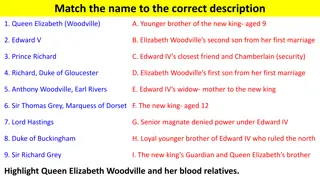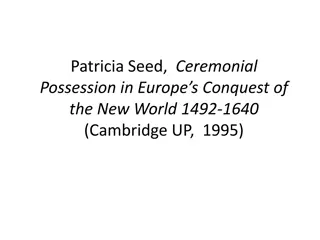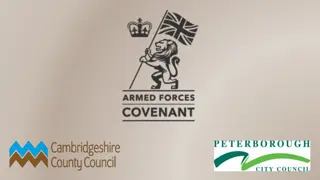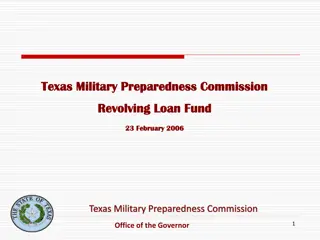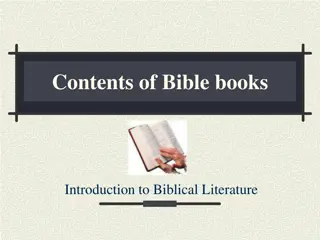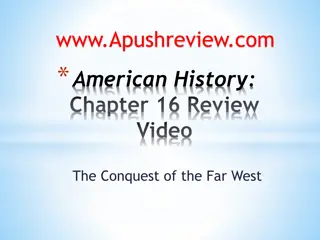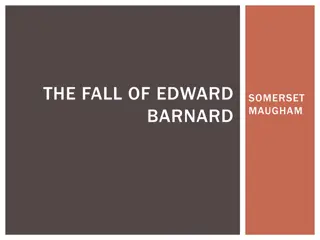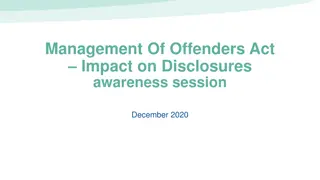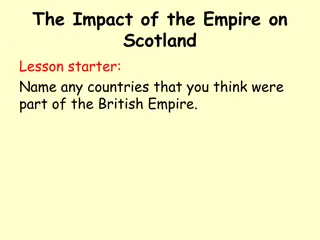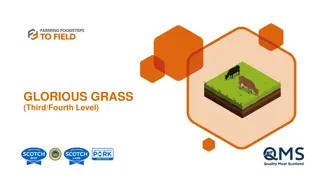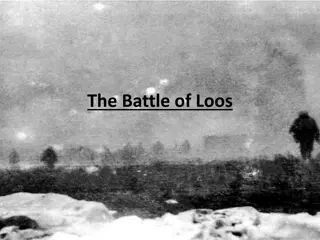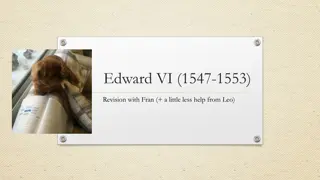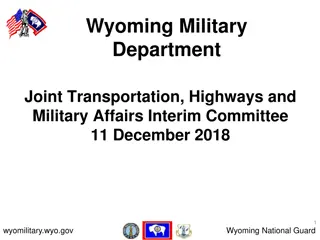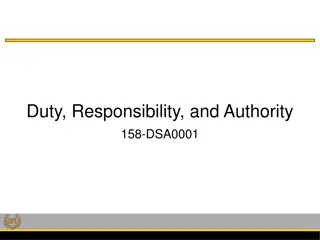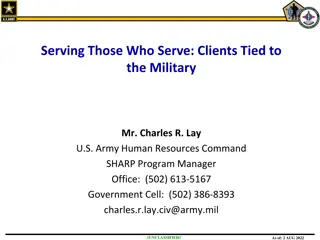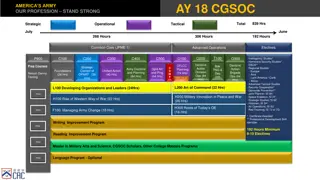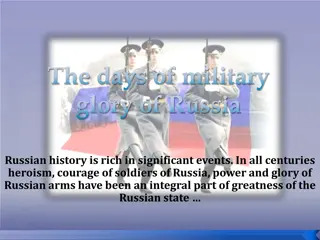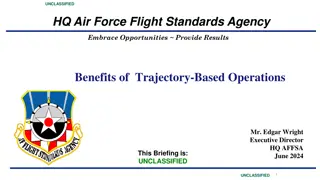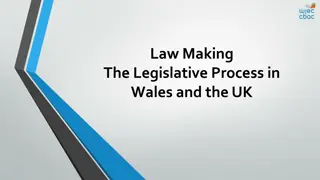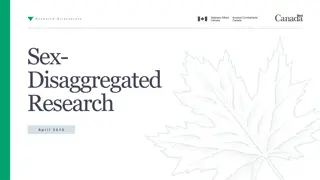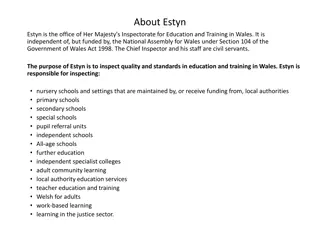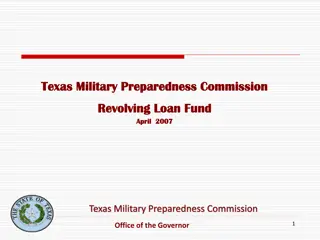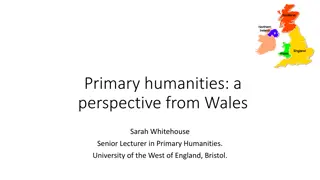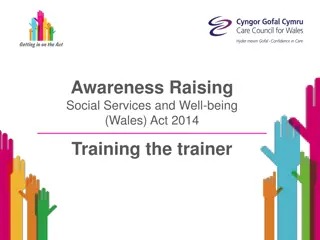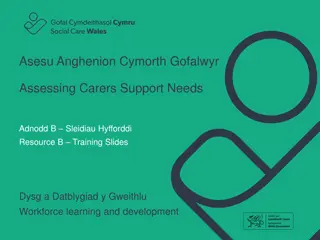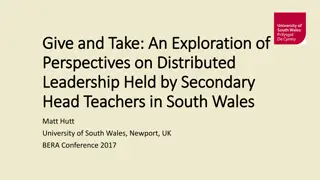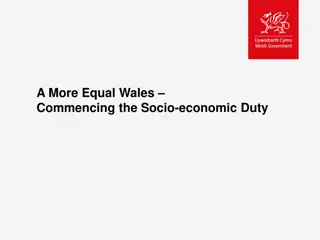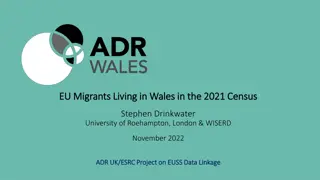The Military Conquest of Wales and Scotland by Edward I
Edward I's military exploits in the Welsh and Scottish wars overshadow his other achievements, forming a significant part of his legacy. This includes key events such as the Welsh Building Project, Treaties of Salisbury and Birgham, and the strategic castles built during his reign, like Caernarfon Castle. These primary sources and treaties shed light on Edward I's approach to governance and his ambitions in Wales and Scotland.
Download Presentation

Please find below an Image/Link to download the presentation.
The content on the website is provided AS IS for your information and personal use only. It may not be sold, licensed, or shared on other websites without obtaining consent from the author. Download presentation by click this link. If you encounter any issues during the download, it is possible that the publisher has removed the file from their server.
E N D
Presentation Transcript
The Legacy of Edward I: Military Conquest of Wales and Scotland Alex Stephens HONS 381: Royal Britain
Thesis Although Edward I did many great things, socially and politically, for England, his military exploits in both the Welsh Wars and the Scottish Wars for Independence overshadow any and all other accomplishments of his reign and make up the majority his legacy.
Primary Sources Letter from Henry III to Edward I Caernarfon Castle (Welsh Building Project) Treaty of Salisbury and Treaty of Birgham
Letter From Henry III to Edward I (c.1267) What have I to do with the matter? I have given you the land; you must defend it with your own resources. I have plenty of other business to do.
Caernarfon Castle - Beaumaris Castle - Conwy Castle - Harlech Castle
Treaty of Salisbury(1289) The King of England faithfully promises that if the lady comes into his hands of custody free and quit of any contract of marriage and betrothal then, when the kingdom of Scotland is completely settled and at peace so that the lady may safely stay there, and when the king of England is requested to do so by the people of Scotland, the king will send the lady to Scotland, as free and quit of all contracts as when he received her: provided that the good people of Scotland before they receive the lady give proper and adequate guarantee to the king of England that they will in no sense marry the lady except with his decree, agreement and advice of her father the king of Norway.
Treaty of Birgham (1290) We [Edward I] promise that the kingdom of Scotland shall remain separate and divided from the kingdom of England by its rightful boundaries and borders as has been observed up to now and that it shall be free in itself and independent, reserving always the right of our lord or whoever which has belonged to him or to anyone in the borders elsewhere.
Secondary Sources History of the Monarchy, The Official Website of the British Monarch "Edward I 'Longshanks' (r. 1272-1307)." The Welsh Wars of Edward I: A Contribution to Mediaeval Military History, Based on Original Documents (1901) by John E. Morris
Highlights of Evidence Campaigns abroad and the approval of the English people Discontent that English citizens faced under Welsh rule Statements made by policies in Wales and actions against Prince Llwelyn of Wales He developed modern Parliament model and altered coinage system, but these things are not what set him apart from other monarchs Scottish Wars spurred on tension between England and Scotland that would last many more years
Most Interesting Find and Contribution to History Personal Relationships of Edward I With his first wife, Eleanor of Castile With his second wife, Margaret of France With his oldest son, who would become King Edward II With his father, King Henry III
Sources Letter from Edward I to Henry III. In Letters of the Kings of England: Now First Collected from the Originals in Royal Archives, and from Other Authentic Sources, Private as Well as Public, edited by James Orchard Halliwell-Phillipps. London: Henry Colburn Press, 1846. Treaty of Birgham Education Scotland. 1290. Accessed March 13, 2015. http://www.educationscotland.gov.uk/higherscottishhistory/warsofindependence/successi onandgreatcause/sources.asp Treaty of Salisbury Education Scotland. 1289. Accessed March 10, 2015. http://www.educationscotland.gov.uk/higherscottishhistory/warsofindependence/successi onandgreatcause/sources.asp Edward I Longshanks (r. 1272-1307). History of the Monarchy, The Official Website of the British Monarch. Accessed January 24, 2015. http://www.royal.gov.uk/HistoryoftheMonarchy/KingsandQueensofEngland/ThePlantage nets/EdwardILongshanks.aspx.
Fraser, Rebecca. 2003. The Story of Britain: From the Romans to the Present: A Narrative History. New York and London: W.W. Norton & Company. Pp 176-184. Morris, John Edward. 1901. The Welsh Wars of Edward I: A Contribution to Mediaeval Military History, Based on Original Documents. Oxford: Clarendon Press. Williamson, David. 1998. The Kings and Queen of England. London: National Portrait Gallery. Pp. 54-57.


